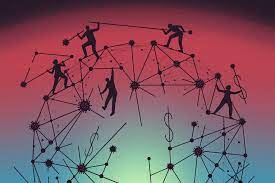Effective conflict management becomes crucial in both business and interpersonal relationships because conflict is an inevitable part of human interaction. Whether in the work environment, local area, or individual life, clashes can emerge from contrasting feelings, values, or targets. This article delves into the strategies, tools, and psychological aspects that contribute to conflict resolution and growth, as well as the nuances of conflict management.
Figuring out Conflict:
Struggle, at its center, is a conflict of interests, thoughts, or values between at least two gatherings. It can appear in different structures, from unobtrusive conflicts to extraordinary questions. Perceiving that contention is a characteristic piece of human collaboration is the most important move toward valuable peace promotion. Rather than keeping away from or smothering struggles, recognizing and addressing them cultivates a climate helpful for development and joint effort.

The Elements of Conflict:
To successfully oversee clashes, understanding their basic dynamics is significant. Clashes frequently come from miscommunication, neglected needs, or varying points of view. Perceiving the underlying drivers takes into consideration designated intercession, resolving the issues at their source as opposed to simply overseeing superficial strains.
Peace promotion Styles:
Conflict management techniques have emerged as a result of individuals' tendency to approach conflict differently. A few people might take on a cutthroat or emphatic style, trying to powerfully declare their requirements and objectives. Others might incline towards aversion, avoiding clashes to keep up with concordance. Cooperative, splitting the difference, and obliging styles likewise assume parts in forming how clashes unfurl.
Understanding one's own peace promotion style and those of others is crucial for viable goal. Adaptability in adjusting approaches in view of the specific circumstance and people included adds to fruitful refereeing.
Plans for Resolving Conflicts:
1.Dynamic Listening:
Undivided attention is a key expertise in compromise. By completely understanding the viewpoints and worries of all gatherings included, a go between or member can establish a climate where everybody feels appreciated and esteemed.
2.Communicating well:
Clear and open correspondence is fundamental for compromise. Offering viewpoints and feelings without fault or judgment cultivates understanding and lays the basis for settling on some shared interest.
3.Collaboration:
Cooperative critical thinking includes all gatherings cooperating to track down commonly useful arrangements. This approach empowers inventiveness, shared liability, and a promise to results that address everybody's requirements.
4.Negotiation:
Discussion abilities are imperative in settling clashes where compromise is fundamental. Recognizing normal interests and finding center ground permits clashing gatherings to arrive at arrangements that fulfill their individual requirements.
5. Struggle Mediation:
In additional complicated struggles, an impartial outsider, like a middle person, can work with conversations and guide the goal cycle. Middle people bring objectivity and assist with spanning holes between clashing gatherings.
The Job of Profound Intelligence:
The capacity to understand people on a deeper level assumes a vital part in peace promotion. The capacity to perceive and deal with one's feelings, as well as relate to other people, cultivates a helpful climate for goal. People with high capacity to appreciate individuals on a profound level can explore clashes with sympathy, understanding, and an emphasis on settling on some shared interest.
Authoritative Ways to deal with Struggle Management:
In a working environment setting, associations should lay out powerful systems for refereeing. This incorporates making open correspondence channels, giving compromise preparing, and advancing a culture that values productive input. When it comes to the creation and implementation of conflict management strategies, human resources departments frequently play a central role.
Understanding Conflict:
In opposition to normal discernment, struggle isn't intrinsically negative. When overseen actually, clashes can prompt positive results, including upgraded correspondence, reinforced connections, and further developed critical thinking abilities. It is easier for businesses to overcome obstacles and encourage creativity when conflicts are viewed as learning opportunities.
Challenges in Struggle Management:
In spite of the advantages of powerful peace making, difficulties can emerge. Power lopsided characteristics, dug in places, and protection from change can frustrate goal endeavors. Beating these difficulties requires a blend of persistence, talented correspondence, and a guarantee to settling on some shared interest.
Social Considerations:
In an undeniably assorted worldwide scene, social contrasts can impact the elements of contentions. Understanding and regarding social subtleties is fundamental in settling clashes without coincidentally propagating mistaken assumptions or predispositions.
The Eventual fate of Contention Management:
The landscape of conflict management continues to change as we move forward. Innovation, like web-based intervention stages, computerized reasoning, and augmented reality, is being coordinated into compromise processes. These devices offer new roads for tending to clashes in an interconnected and advanced world.

**Conclusion:**
Struggle, however frequently saw with fear, is an intrinsic part of human connection. A combination of interpersonal skills, emotional intelligence, and strategic approaches is required for effective conflict management. Individuals and organizations can turn challenges into opportunities for growth, collaboration, and improved relationships by acknowledging the inevitability of conflicts, comprehending their dynamics, and employing efficient strategies for conflict resolution. In our current reality where variety and varying viewpoints are resources, the capacity to explore clashes capably turns into a foundation for practical achievement.



You must be logged in to post a comment.